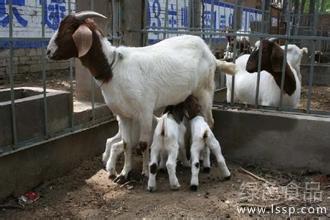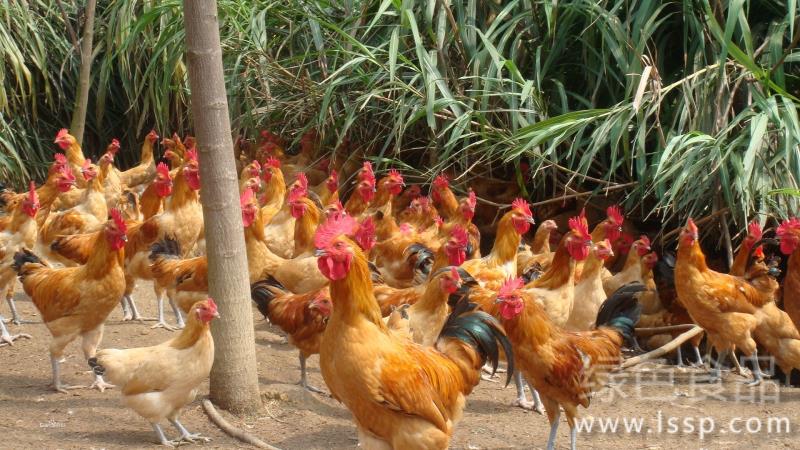Reasonable feeding methods of ewes in the third trimester of pregnancy

Raising sheep
After a long winter, most ewes are in the third trimester of pregnancy in spring. At this time, the growth rate of the fetus is accelerated and a lot of nutrition is needed. at the same time, the abdomen of the ewe is squeezed by the fetus and the food intake is limited. Therefore, to increase the proportion of concentrate in the diet, generally the proportion of concentrate in the early stage of pregnancy accounted for 5%, increased to 18% at the 6th week before pregnancy, and increased to 30% at the 3rd week before delivery. When there is no green feed in the diet, vitamin A, E, D and so on should be supplemented.
In management, we should pay attention to protecting the fetus. Do not allow ewes to crowd and run fast to prevent slipping; do not let ewes drink cold water on an empty stomach in the morning, do not be overfed, do not eat moldy or ice-dregs forage, and prohibit excessive use of laxatives. Heat preservation measures should be taken for the lambing house, there should be no invasion of thieves, and clean and soft cushions should be padded on the interior. The lambing house should be thoroughly disinfected before the ewe enters, and then be sprayed with disinfectant every 5 days. Ewes in labor should enter the delivery room 2-3 days in advance.
E. coli vaccine was injected one month before lambing. Deworming once 25 days before delivery, 0.2% Weijia can be used, 0.1 grams per kilogram body weight. Ewes with scabies were treated repeatedly every 7 days after the first treatment, and 4% trichlorfon was sprayed on the sheep house.
A low-calcium diet must be fed 20 days before delivery, and the calcium content in the diet should be 0.2%, which can be increased to 0.8% immediately after delivery, which can prevent ewes from postpartum paralysis. Injection of vitamin D into ewes 5-6 days before delivery can also effectively prevent postpartum paralysis. The amount of concentrate feeding was gradually reduced 3 days before delivery. On the day of lambing, do not feed the ewes concentrate, feed digestible grass or hay, drink warm bran water, add some salt and brown sugar. The amount of concentrate feeding increased gradually after delivery, and reached the maximum on the 10th day. Diet composition: concentrate 0.3-0.6 kg, silage 1-2 kg, hay 1-2 kg, carrots 0.5 kg. Stop feeding ewes root succulent feed 7-10 days before weaning to gradually reduce concentrate so as not to cause mastitis.
Postpartum injection of oxytocin 5: 10 international unit, postpartum Kang 2 branches to prevent puerperal fever, mastitis, uterine inflammation, promote the early recovery of ewe uterus, as soon as possible estrus mating. You can also take motherwort soup.
Vaccination of the vaccine was carried out 30 days after delivery. Mating precursors can help ewes get pregnant and prevent miscarriage caused by parasites. Liuweijia powder has a good effect on repelling nematodes and body surface parasites, and albendazole can dispel taeniasis, trematodes, nematodes and so on.
Generally, ewes are mated at 40-60 days after delivery, and those who cannot be in estrus naturally should be artificially urged to do so. When the weight of ewes increased by 1 kg before mating, the lambing rate increased by 2.1%. Increasing the amount of concentrate feed, especially energy feed, 20 days before mating can significantly increase the conception rate of ewes.
- Prev

It is fastidious to feed the rabbit concentrate.
Concentrate includes energy-based grain feed materials such as corn, barley, wheat, sorghum, wheat bran and fine rice bran, and feed materials with high protein content, such as soybean meal, rapeseed cake, fish meal, silkworm pupa and blood meal. Their common characteristics are low crude fiber content, low water content and high nutritional value. If you want to improve the weight gain rate of meat rabbits, so that hairy rabbits produce more hair, Rex rabbits produce high-grade skin, can not be separated from concentrate. The principle of using concentrate is that according to the nutritional needs of different kinds of rabbits, according to different regions and different regions.
- Next

Key points of feeding and Management of Chai Chicken during laying period to ensure laying rate
Key points of feeding and Management of Chai Chicken during laying period to ensure laying rate
Related
- On the eggshell is a badge full of pride. British Poultry Egg Market and Consumer observation
- British study: 72% of Britons are willing to buy native eggs raised by insects
- Guidelines for friendly egg production revised the increase of space in chicken sheds can not be forced to change feathers and lay eggs.
- Risk of delay in customs clearance Australia suspends lobster exports to China
- Pig semen-the Vector of virus Transmission (4)
- Pig semen-the Vector of virus Transmission (3)
- Five common causes of difficult control of classical swine fever in clinic and their countermeasures
- Foot-and-mouth disease is the most effective way to prevent it!
- PED is the number one killer of piglets and has to be guarded against in autumn and winter.
- What is "yellow fat pig"? Have you ever heard the pig collector talk about "yellow fat pig"?

